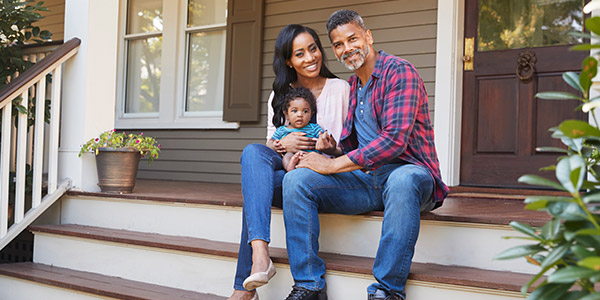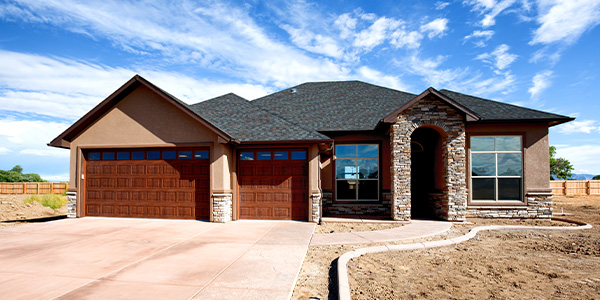Homebuyers
Conventional 97 Loans In 2022: Qualifications, Description, and More
May 10, 2022
In today's red-hot housing market, property values are rapidly on the rise. This is great news for existing homeowners but can be troublesome for those just entering the market. Many borrowers have long thought they need to put down up to 20% of the home's value as a down payment. But that's not the case. Numerous loan programs allow you to put down much less than 20%.
That's especially important now, as rising home values limit many people's ability to put down a sizable down payment. If you're like so many others, Fannie Mae's conventional 97 loan options could be the solution you need. With a conventional 97% Loan-to-Value (LTV) Standard loan, you'll only need to put down 3% of the home's value as your down payment, with the rest of the balance included in your loan (hence the 97).
Of course, no loan offering is one-size-fits-all, so here we'll take a deeper dive into 97% LTV Standard loan details to help you decide if this may be the right financial solution for you.
Conventional 97 Basics: What is a 97% LTV Standard loan?
For years, many people thought that the standard down payment was 20%. While this may not have been an issue for some existing homeowners who could use proceeds from the sale of their previous home toward their new down payment, it proved to be a considerable burden for those newly entering the market. That led to several low- and no-down payment loan types being created, each with different features and guidelines.
This effort included Fannie Mae creating 97% LTV Standard loans as a way to help borrowers who would otherwise qualify but are unable to come up with a larger down payment. Where the 97% LTV Standard loans differ from other similar loans is that there are no upfront mortgage insurance fees and the required private mortgage insurance (PMI) can be dropped once certain criteria have been met. While this program was designed for first-time homebuyers, eligibility requirements only stipulate that at least one buyer on the loan has not owned a home within the past three years.
2022 Conventional 97 Loan Requirements
Additional conventional 97 loan requirements in 2022 include:
- The mortgage is a fixed-rate loan
- The property is a one-unit single-family home, co-op, PUD, or condo
- The property will be the owner's primary residence
- The loan amount is at or below $647,200
How do you qualify for a conventional 97 loan?
Qualifying for a conventional 97 loan isn't much different than qualifying for any other conventional loan. In addition to the criteria listed above, Fannie Mae requires a minimum credit score of 620 for all loans, which is below what some might expect for a loan with such a low down payment. This lower credit score requirement is because of the PMI included with each loan. However, once the loan reaches a 78% loan-to-value (LTV), the PMI requirement drops off and the borrower's monthly payment will go down in turn. Further, at the time of the loan, the primary borrower's DTI must be no more than 43%.
Another benefit to choosing a 97% LTV Standard loan is that you can have multiple down payment sources beyond the traditional savings required for other loans. For a 97% LTV Standard loan, you may use any combination of the following sources to make your down payment:
- Savings
- Gift funds
- Grants
- Community seconds mortgage funds
Refinancing to a Conventional 97 Loan
If you already have an existing mortgage, it may be possible to refinance to a conventional 97 loan, provided that Fannie Mae also owns your current loan. If you're unsure whether you currently have a Fannie Mae loan, reach out to a New American Funding Loan Officer and they'll help determine your eligibility to refinance to a 97% LTV Standard loan.
One important point to note about refinancing to a 97% LTV Standard loan is you will not be able to perform a cash-out refinance, meaning you can only refinance the remaining amount owed on your home and no additional cash.
Is a conventional 97 loan right for you?
If you meet all the criteria listed above, a 97% LTV Standard loan could be right for you! While there are some definite pros, such as the cancellation of PMI once you've reached a 78% DTI and the low credit score requirements, there are also some things to consider as well. First, your loan payments will be dictated by the 30-year mortgage rates at the time of your loan, regardless of how the market may fluctuate in the future.
Our conventional 97 loan calculator can help you see what your monthly payments could look like with this loan type.
Are there other options other than conventional 97 loans?
If you're not sure whether a 97% LTV Standard loan is right for you, we encourage you to talk to a New American Funding Loan Officer to learn about other conventional loans and government-sponsored programs (including low- and no-down payment options) that could help you get into your new home.
Additionally, we offer a mortgage calculator that can help you begin thinking about your budget.
If you're in the market for a new home or simply want to discuss your financing options, we'd love to hear from you today!





 Smart Moves Start Here.
Smart Moves Start Here.